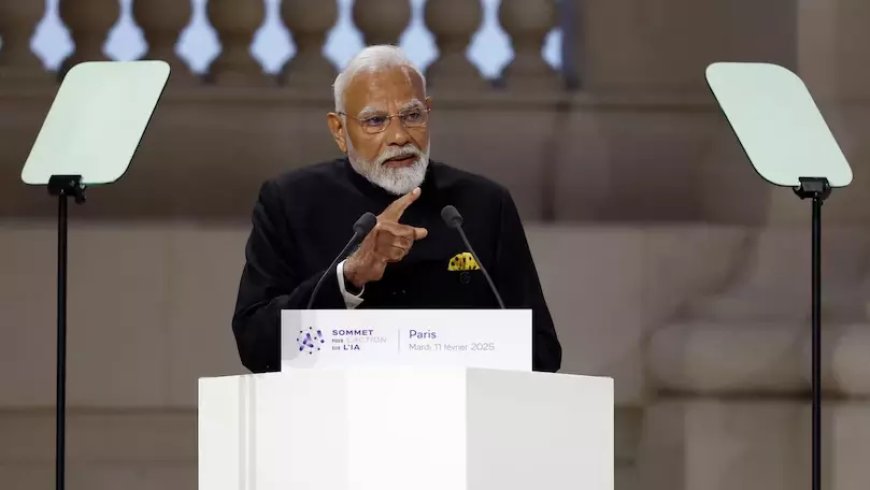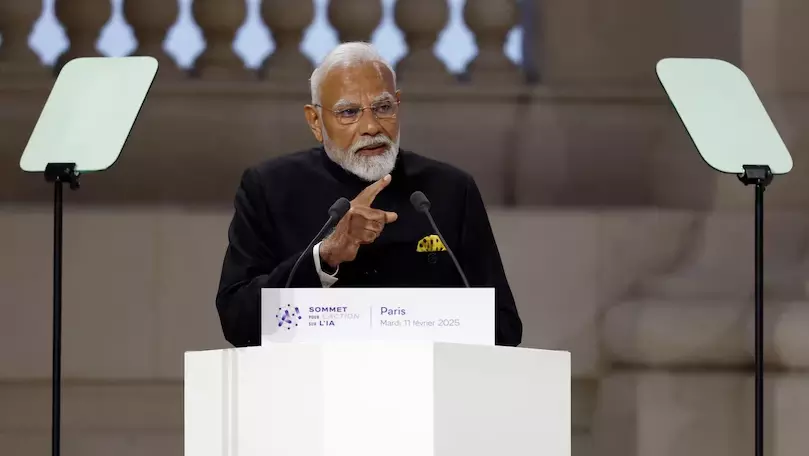India set to add 500 GW renewable energy capacity by 2030: Modi
Modi further said that India’s rapid economic progress is moving from the 10th to the 5th largest economy in the last decade


New Delhi: Emphasising that the next two decades would be crucial for India's goal of becoming a Viksit Bharat, Prime Minister Narendra Modi on Tuesday announced that India is set to add 500 gigawatts (GW) of renewable energy capacity by 2030. “Our targets may seem ambitious, but the achievements of the past decade give us the confidence to meet them,” Modi said during his virtual address at Indian Energy Week (IEW) 2025 here.
The Prime Minister also outlined India’s energy ambitions, stating that they stand on five key pillars – resource availability, skilled workforce, economic strength, political stability, and strategic geography, reaffirming India's commitment to global sustainability in driving domestic energy growth in the country. He also urged investors to invest in India’s energy sector, saying the country offers many possibilities in view of its renewable energy goals in the next five years.
At present, India has already achieved the milestone of 100 GW solar energy capacity, Union minister Pralhad Joshi had said on Friday. However, the Prime Minister highlighted, saying that India aims to add 500 GW of energy capacity by 2030 as part of its transition to cleaner and more efficient energy sources. There are many possibilities of investment in these energy sectors,” Modi said.
Modi further said that India’s rapid economic progress is moving from the 10th to the 5th largest economy in the last decade. All experts are saying that the 21st century is India’s century. Bharat is not only driving its own growth, but driving global growth. India’s energy ambitions are based on five pillars. India has strategic geography, which makes energy trade easier and more attractive. India is bringing out reforms to exploit the full potential of exploration and production of hydrocarbons in the country,” he said.
For Viksit Bharat, the next two decades are very crucial, Modi said, adding that in the next five years we will cross many milestones. “Our energy goals are aligned with the deadline of 2030. By 2030, we want to add 500 GW of RE capacity, as Indian Railways will be net zero by 2030 and we aim to achieve 5 MT annual output of green hydrogen,” he said and stressed “whatever India has achieved in the last ten years shows that these targets will be achieved.”
In the last 10 years, India has become 5th largest economy from 10th largest. “In last 10 years, solar generation capacity has increased 32 times. Today India is the third largest solar power generating nation and non-fossil fuel capacity increased three times. India is the first country among G20 nations to meet its carbon emission cut target set by the Paris global climate conference,” he said.
Modi further said that India is the fourth largest refining hub and it would expand its capacity by 20 per cent. He also pointed towards new hydrocarbon discoveries in the country which are yet to be explored, and the government has brought out open licensing acreage policy (OLAP). “The government has supported the energy sector by setting up exclusive economic zones and a single-window clearance system,” he stated.
After amendments in the Oilfields Regulation & Development Act, stakeholders will get policy stability, extended leases and improved financial terms. He also noted that the natural gas supply is increasing due the ramp up in pipeline infrastructure and discoveries. “There are a lot of upcoming possibilities of investments in these sectors,” he said.
India's major focus is on 'Make in India' and local supply chains, Modi said while highlighting the country's potential of manufacturing various types of hardware, including PV modules. “India is supporting local manufacturing, with the solar PV module manufacturing capacity expanding from 2 gigawatts to approximately 70 gigawatts in the past ten years,” the prime minister noted.






































